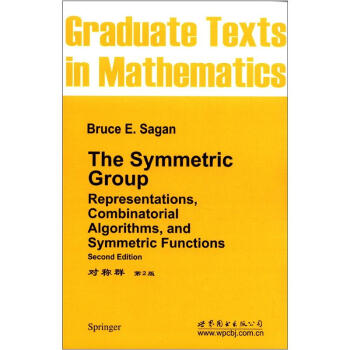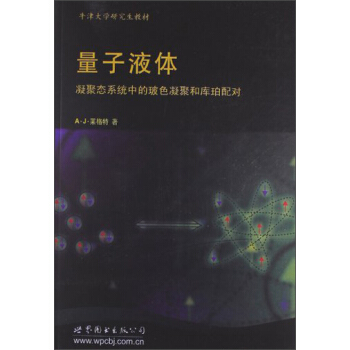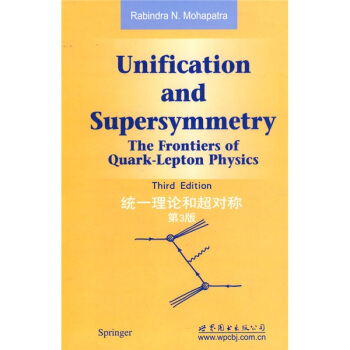

具体描述
内容简介
《统一理论和超对称(第3版)》是作者依据其为马里兰大学高年级研究生授课时所用的讲义编著而成,详细介绍了人们尝试建立一个能够描述自然界中各种基本相互作用的大统一理论的最新进展。《统一理论和超对称(第3版)》包罗甚广,涉及到粒子物理学中的大统一理论和超对称理论中的许多议题,例如自发对称破缺,大统一理论,超对称性和超引力等。作者在简要回顾了基本粒子理论之后,详细介绍了复合夸克,轻子,希格斯玻色子和CP破坏等论题,最后讨论超对称的大统一方案。这是《统一理论和超对称(第3版)》的第三版,进一步修订了书中内容,添入该领域的最新进展,特别是近年来实验方面的诸多进展。对这些新进展的集中介绍很有意义,使得《统一理论和超对称(第3版)》成为该领域中连接传统理论与研究前沿的有益桥梁。无论对该领域的研究生还是对研究人员来讲,《统一理论和超对称(第3版)》都是一部很有价值的教科书和参考文献。内页插图
目录
Preface to the Third EditionPreface to the Second Edition
Preface to the First Edition
1 Important Basic Concepts in Particle Physics
1.1 Introduction
1.2 Symmetries and Currents
1.3 Local Symmetries and Yang-Mills Fields
1.4 Quantum Chromodynamic Theory of Strong Interactions
1.5 Hidden Symmetries of Weak Interactions
References
2 Spontaneous Symmetry Breaking
2.1 Symmetries and Their Realizations
2.2 Nambu-Goldstone Bosons for an Arbitrary Non-Abelian Group
2.3 Some Properties of Nambu-Goldstone Bosons
2.4 Phenomenology of Massless and Near-Massless Spin-0 Bosons
2.5 The Higgs-Kibble Mechanism in Gauge Theories
2.6 Group Theory of the Higgs Phenomenon
2.7 Renormalizability and Triangle Anomalies
References
3 The SU(2)L x U(1) Model
3.1 The SU(2)L x U(1) Model of Glashow, Weinberg, and Salam
3.2 Neutral-Current Interactions
3.3 Masses and Decay Properties of W and Z Bosons
3.4 Fermion Masses and Mixing
3.5 Higher-Order-Induced Flavor-Changing Neutral-Current Effects
3.6 The Higgs Bosons
3.7 SU(2)L x U(1) Model with Two Higgs Doublets
3.8 Puzzles of the Standard Model
3.9 Outline of the Various Scenarios
3.10 Beyond the Standard Model
References
4 CP Violation: Weak and Strong
4.1 CP Violation in Weak Interactions
4.2 CP Violation in Gauge Models: Generalities
4.3 The Kobayashi-Maskawa Model
4.4 Left-Right Symmetric Models of CP Violation
4.5 The Higgs Exchange Models
4.6 Strong CP Violation and the 0-Problem
4.7 Solutions to the Strong CP Problem without the Axion
4.8 Summary
References
5 Grand Unification and the SU(5) Model
5.1 The Hypothesis of Grand Unification
5.2 SU(N) Grand Unification
5.3 Sin2 Ow in Grand Unified Theories (GUT)
5.4 SU(5)
5.5 Grand Unification Mass Scale and Sin2θw at Low Energies
5.6 Detailed Predictions of the SU(5) Model for Proton Decay
5.7 Some Other Aspects of the SU(5) Model
5.8 Gauge Coupling Unification with Intermediate Scales before Grand Unification
References
6 Symmetric Models of Weak Interactions and Massive Neutrinos
6.1 Why Left-Right Symmetry?
6.2 The Model, Symmetry Breaking, and Gauge Boson Masses
6.3 Limits on MzR and rnwR from Charged-Current Weak Interactions
6.4 Properties of Neutrinos and Lepton-Number-Violating Processes
6.5 Baryon Number Nonconservation and Higher Unification
6.6 Sin2θw and the Scale of Partial Unification
6.7 Left-Right Symmetry——An Alternative Formulation
6.8 Higher Order Effects
6.9 Conclusions
References
7 SO(10) Grand Unification
7.1 Introduction
7.2 SO(2N) in an SU(N) Basis [3]
7.3 Fermion Masses and the "Charge Conjugation" Operator
7.4 Symmetry-Breaking Patterns and Intermediate Mass Scales
7.5 Decoupling Parity and SU(2)R Breaking Scales
7.6 Second Z Boson
References
8 Technicolor and Compositeness
8.1 Why Compositeness?
8.2 Technicolor and Electroweak Symmetry Breaking
8.3 Techni-Composite Pseudo-Goldstone Bosons
8.4 Fermion Masses
8.5 Composite Quarks and Leptons
8.6 Light Quarks and Leptons and t Hooft Anomaly Matching
8.7 Examples of t Hooft Anomaly Matching
8.8 Some Dynamical Constraints on Composite Models
8.9 Other Aspects of Composite Models
8.10 Symmetry Breaking via Top-Quark Condensate
References
9 Global Supersymmetry
9.1 Supersymmetry
9.2 A Supersymmetric Field Theory
9.3 Two-Component Notation
9.4 Superfields
9.5 Vector and Chiral Superfields
References
10 Field Theories with Global Supersymmetry
10.1 Supersymmetry Action
10.2 Supersymmetric Gauge Invariant Lagrangian
10.3 Feynman Rules for Supersymmetric Theories [3]
10.4 Allowed Soft-Breaking Terms
References
11 Broken Supersymmetry and Application to Particle Physics
11.1 Spontaneous Breaking of Supersymmetry
11.2 Supersymmetric Analog of the Goldberger Treiman Relation
11.3 D-Type Breaking of Supersymmetry
11.4 ORaifeartaigh Mechanism or F-Type Breaking of Supersymmetry
11.5 A Mass Formula for Supersymmetric Theories and the Need for Soft Breaking
References
12 Minimal Supersymmetric Standard Model
12.1 Introduction, Field Content and the Lagrangian
12.2 Constraints on the Masses of Superparticles
12.3 Other Effects of Superparticles
12.4 Why Go beyond the MSSM?
12.5 Mechanisms for Supersymmetry Breaking
12.6 Renormalization of Soft Supersymmetry-Breaking Parameters
12.7 Supersymmetric Left-Right Model
References
13 Supersymmetric Grand Unification
14 Local Supersymmetry (N = 1)
15 Application of Supergravity (N = 1) to Particle Physics
16 Beyond N = 1 Supergravity
17 Superstrings and Quark-Lepton Physics
Index
精彩书摘
three-quark bound states, whereas meson spectroscopy arises from nonrela tivistic quark-antiquark bound states. Accepting quarks as the constituents of hadrons, we have to search for a field theory that provides the bindingforce between the quarks.In trying to understand the Fermi statistics for baryons (such as ), itbecame clear that if they are S-wave bound states, then the space part oftheir wave function is totally symmetric; since a particle such as consists of three strange quarks, and has spin 3/2, the spin part of its wave functionis symmetric. If there were no other degree of freedom, this would be indisagreement with the required Fermi statistics. A simple way to resolvethis problem is to introduce [11] a threefold degree of freedom for quarks,called color (quarks being color triplets) and assume that all known baryonsare singlet under this new SU(3). Since an SU(3)c-singlet constructed outof three triplets is antisymmetric in the interchange of indices (quarks), thetotal baryon wave function is antisymmetric in the interchange of any twoconstituents as required by Fermi statistics.
It is now tempting to introduce strong forces by making SU(3)c into alocal symmetry. In fact, if this is done, we can show that exchange of theassociated gauge bosons provides a force for which the SU(3)c color singletis the lowest-lying state; and triplet, sextet, and octet states all have highermass. By choosing this mass gap large, we can understand why excitedstates corresponding to the color degree of freedom have not been found.
While this argument in favor of an SU(3)c gauge theory of strong inter-action was attractive, it was not conclusive. The most convincing argumentin favor of SU(3)c gauge theory came from the experimental studies of deepinelastic neutrino and electron scattering off nucleons. These experimentsinvolved the scattering of very-high-energy (E) electronsand neutrinoswith the exchange of very high momentum transfers (i.e., q2 large). It wasfound that the structure functions, which are analogs of form factors forlarge q2 and E, instead of falling with q2, became scale-invariant functionsdepending only on the ratio q2/2mE. This was known as the phenomenonof scaling [12]. Two different theoretical approaches were developed to un-derstand this problem. The first was an intuitive picture called the partonmodel suggested by Feynman [13] and developed by Bjorken and Paschos[14], where it was assumed that, at very high energies, the nucleon can bethought of as consisting of free pointlike constituents. The experimentalresults also showed that these pointlike constituents were spin-l/2 objects,like quarks, and the scaling function was simply the momentum distri-bution function for the partons inside the nucleon. These partons couldbe identified with quarks, thus providing a unified description of the nu-cleon as consisting of quarks at low, as well as at high, energies. The maindistinction between these two energy regimes uncovered by deep inelas-tic scattering experiments is that at low energies the forces between thequarks are strong, whereas at high energies the forces vanish letting thequarks float freely inside the nucleons.
前言/序言
The new millennium has brought new hope and vigor to particle physics.The menacing clouds of despair and discontent that enveloped the fieldfollowing the collapse of SSC have all but vanished. The discovery of neu-trino mass has brought the first light of new physics beyond the standardmodel. The LEP-SLC data has given strong hints of a light Higgs boson,which is widely hoped, will be discovered soon either at the Tevatron of LHC. LEP may quite possibly have missed it by a hair. Many neutrinoexperiments are either underway or are in the planning stages, and a roughoutline of neutrino mixing is appearing on the horizon. There are discussions of pulling resources internationally to build a linear collider after theLHC. Many major breakthroughs in the sister discipline of cosmology havelightened up the sky. Even the job situation in the field is showing signs of improvement after a long plateau.All this hope and optimism about a bright future for the field seem tobe resting on two ideas: unification and supersymmetry. The first is based on the amazing success of the standard model, giving credence to the possibility that the final theory of particle physics could come from gaugetheories and string theory, from which the gauge symmetries follow. The belief in supersymmetry arises not only from its beauty and elegance and its ability to truly unify matter and forces but also from the way it em- braces gravity into the fold of particle physics. Its hold on the field is almost as pervasive as that of gauge theories. Even though there are many other competing ideas vying for the attention of theorists, the general direction seems to be largely set towards supersymmetry, supergravity, and super- strings.
用户评价
从内容深度来看,这本书的广博程度令人叹为观止。它不仅仅是简单地罗列现有模型,而是深入剖析了各个流派思想的内在矛盾与潜在的统一可能性。书中对模型演化过程的梳理极为详尽,甚至不惜篇幅去探讨那些已经被主流理论所淘汰的早期尝试,这使得读者能够更深刻地理解当前理论为何会以这种形态存在。对于那些试图在某一特定领域钻研的读者来说,这本书提供了一个极佳的宏观视角,让你清楚地知道自己所处的理论高地是建立在怎样一片广袤的知识平原之上的。它成功地在“全面性”与“深度”之间找到了一个近乎完美的平衡点,绝非市面上常见的那些浮光掠影的概论性读物可比。
评分这本书的翻译质量,坦白说,是超出我预期的。面对如此高度专业化、充满术语和复杂句式的原文,翻译工作是一项巨大的挑战,但译者团队显然投入了极大的心血。我对比了几个关键术语的翻译,发现他们不仅准确地传达了原文的字面意思,更重要的是,成功地捕捉到了物理概念的精髓和上下文的语境。例如,对于一些在不同理论体系中有细微差别定义的词汇,译者采用了统一且规范的中文表达,避免了阅读中的混淆。流畅度上,中文行文自然流畅,没有那种生硬的“翻译腔”,读起来非常顺口,这极大地提升了阅读体验,让非母语读者也能无障碍地沉浸于前沿的科学探讨之中。
评分关于书中案例和习题的设置,我认为这是本书最具实践指导价值的部分之一。通常这种级别的著作,习题要么过于简单,要么复杂到脱离实际,但这本书的例题设计简直是教科书级别的典范。它们紧密围绕着理论核心,但又巧妙地避开了教科书式的直接套用。我尝试解答了其中关于边界条件设定的几个问题,发现这些问题真正考验的是对物理直觉和数学技巧的综合运用能力。更棒的是,作者在解答部分的处理上非常谨慎,没有直接给出最终答案,而是提供了详尽的解题思路和关键步骤的提示,鼓励读者独立思考。这种“点拨式”的教学方法,对于培养独立解决问题的能力具有不可替代的作用。
评分这本书的装帧设计真是深得我心。封面采用了一种哑光的质感,深邃的蓝色调搭配着简洁的白色和金色的字体,透露出一种沉稳而又不失现代感的学术气息。翻开内页,纸张的选择也非常考究,厚实且不反光,长时间阅读下来眼睛也不会感到疲劳。版式布局清晰明了,章节标题和正文之间的留白处理得当,使得阅读的节奏感非常舒适。就连索引和参考文献部分的排版都显得井井有条,查找起来十分方便。细节之处见真章,这本厚重的著作在实体呈现上做到了既有分量感,又不失为一件值得收藏的艺术品。每一次翻阅,都能感受到出版方在图书制作上的匠心独运,这对于严肃的学术书籍来说,无疑是加分项。
评分我花了整整一个下午的时间,试图梳理一下这本书的叙述逻辑,感觉作者在构建理论框架时采用了非常精妙的“螺旋上升”结构。它不是简单地堆砌公式和定义,而是循序渐进地引导读者进入核心概念。一开始,作者用非常直观的类比和历史背景铺垫了基础,让你在不感到压迫的情况下掌握了必要的数学工具。随后,随着章节的深入,信息的密度和抽象程度逐步提高,但每一次提升都有前文扎实的铺垫作为支撑。这种处理方式极大地降低了初学者望而却步的门槛,同时也为资深研究者提供了深入探索的阶梯。我特别欣赏作者在引入复杂数学结构时,那种仿佛在和你进行一场高水平的、但又耐心十足的对话的叙事风格,让人感觉自己是参与者而非单纯的接受者。
评分好。。。。。。。
评分书很不错,物流速度也很快。
评分可以
评分很难的,一般人不一定看得懂
评分书很不错,物流速度也很快。
评分不错的书,统一理论和超对称的书其中一本吧
评分值得购买. 书本质量好,印刷清晰
评分好。。。。。。。
评分书很不错,物流速度也很快。
相关图书
本站所有内容均为互联网搜索引擎提供的公开搜索信息,本站不存储任何数据与内容,任何内容与数据均与本站无关,如有需要请联系相关搜索引擎包括但不限于百度,google,bing,sogou 等
© 2026 book.tinynews.org All Rights Reserved. 静思书屋 版权所有

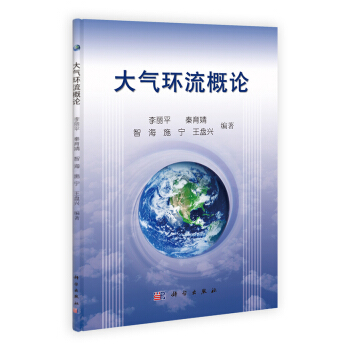
![中外物理学精品书系·引进系列(19):受控核聚变中的等离子体与材料的相互作用(影印版) [Plasma-Material Interaction in Controlled Fusion] pdf epub mobi 电子书 下载](https://pic.tinynews.org/11300129/rBEhWFIUU-wIAAAAAAMp7O9ZpJwAACR6ACWhdoAAyoE577.jpg)
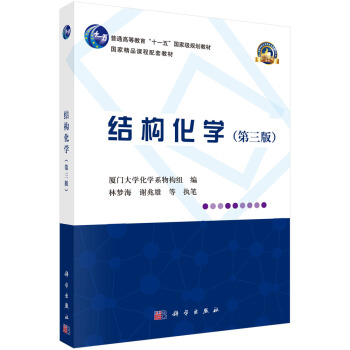
![椭圆曲线的有理点 [Rational Points on Elliptic Curves] pdf epub mobi 电子书 下载](https://pic.tinynews.org/11647744/54e1b516Nc907b294.jpg)
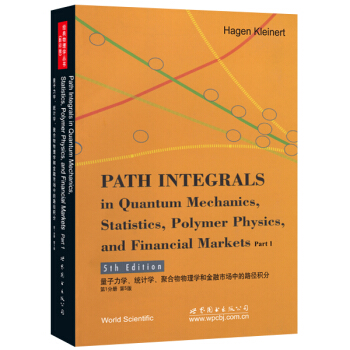
![量子群入门 [A Guide to Quantum Groups] pdf epub mobi 电子书 下载](https://pic.tinynews.org/10184614/52569431-fb1f-4b41-9463-fd47031ffa99.jpg)
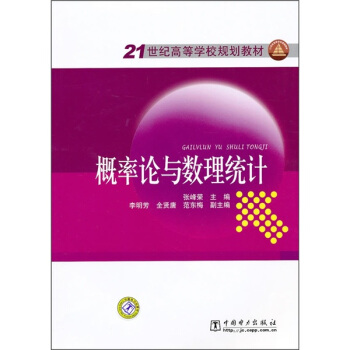
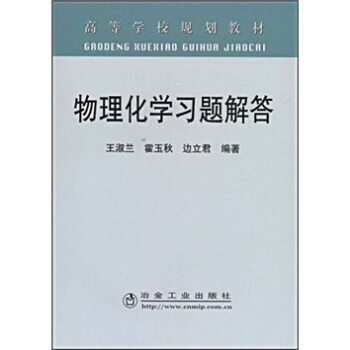
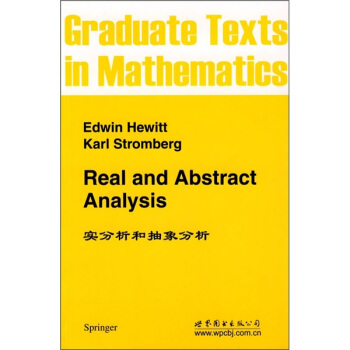
![线性代数群 [Linear Algebraic Groups] pdf epub mobi 电子书 下载](https://pic.tinynews.org/10857737/fcb2f257-227e-43db-bed7-c73076c42824.jpg)
![经典物理学丛书(影印版):简明统计力学 [Statistical Mechanics in a Nutshell] pdf epub mobi 电子书 下载](https://pic.tinynews.org/11316302/rBEhU1I4U_oIAAAAAAI69WH8VOoAADQsAOJkQ4AAjsN983.jpg)
![初等数列研究与欣赏(上) [Primary Sequence Study and Appreciation] pdf epub mobi 电子书 下载](https://pic.tinynews.org/11879285/56e7d759Nb9bfd2cf.jpg)
![除尘工程技术手册 [Handbook on Dust Removal Engineering Techology] pdf epub mobi 电子书 下载](https://pic.tinynews.org/11920147/5739c28cNcdf78f19.jpg)
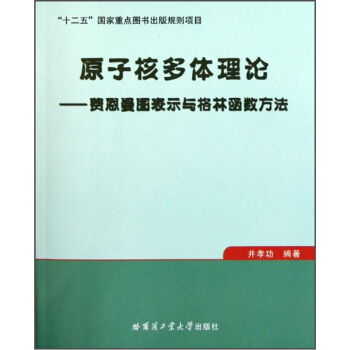
![紧复曲面(第2版) [Compact Complex Surfaces(Second Enlarged Edition)] pdf epub mobi 电子书 下载](https://pic.tinynews.org/10904479/29188fd0-2c57-4e1e-8b2f-1f3d4b31bce4.jpg)
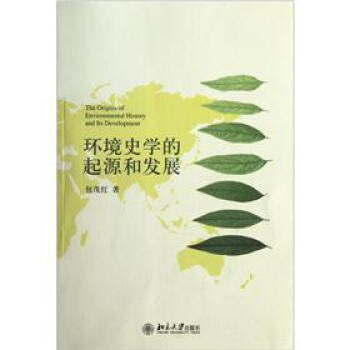
![化归与归纳·类比 联想(珍藏版) [Reduction And Induction Analogy Association] pdf epub mobi 电子书 下载](https://pic.tinynews.org/11883761/56f8fee3Nc9f86c4f.jpg)
![超对称和弦论(英文版) [Supersymmetry and String Theory] pdf epub mobi 电子书 下载](https://pic.tinynews.org/10184594/e5b89bc9-3b3b-4fad-8861-ede9b682c51f.jpg)
